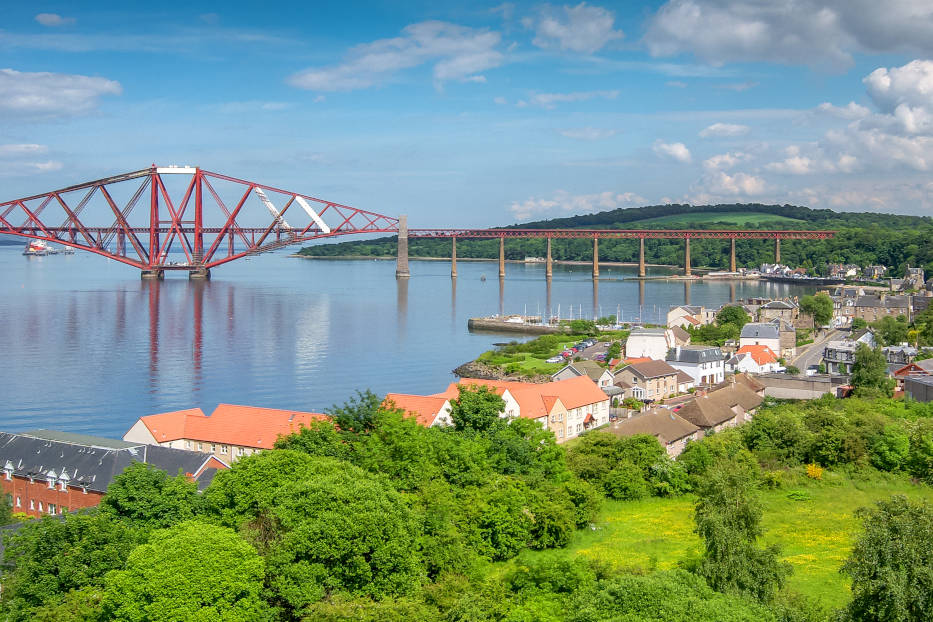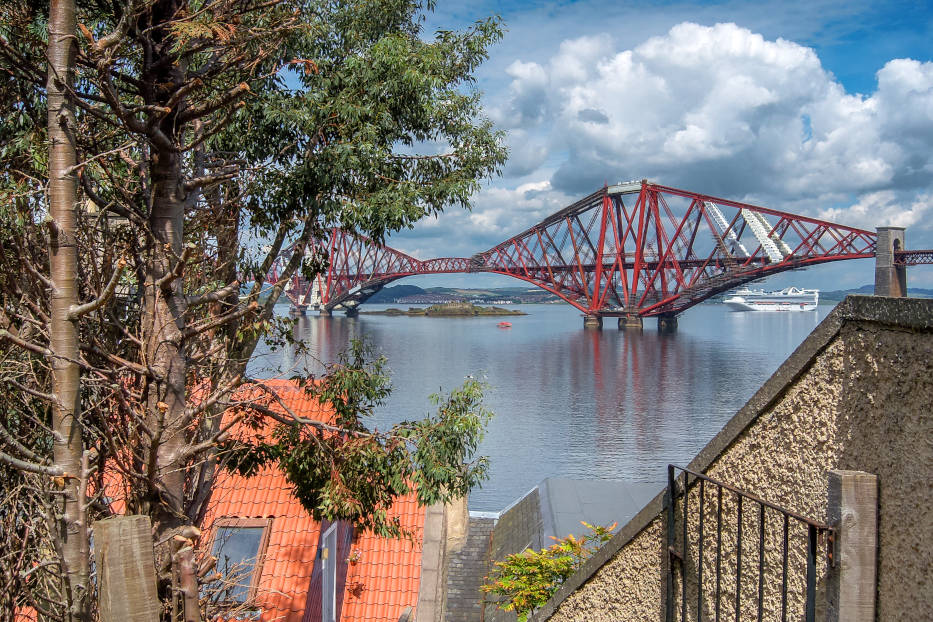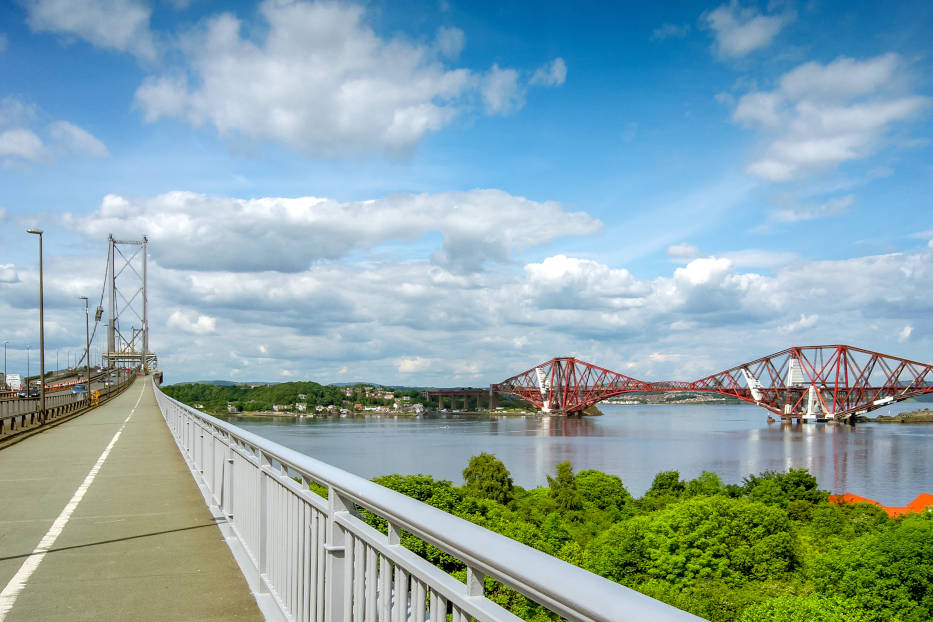Spanning the Firth of Forth near Edinburgh, the Forth Bridge became Scotland’s sixth UNESCO world heritage site in 2015. This colossal cantilever railway bridge, a masterpiece of Victorian engineering, has captivated people worldwide since its completion at the end of the 19th century.
Renowned for both its aesthetic appeal and structural brilliance, the bridge continues to inspire engineers, historians, and visitors alike. Its striking red framework and commanding presence make it one of Scotland’s most iconic landmarks.
Table of Contents
The Vision and Construction of the Forth Bridge
Built to replace the unreliable ferry service across the Firth of Forth, the bridge connected Edinburgh to the north of Scotland by railway. Before its construction, travelers depended on ferries, but harsh weather and increasing demand made crossings difficult.
The vision for the bridge was to create a durable and efficient transport link that could withstand the challenges of Scotland’s unpredictable climate. Designed by Sir John Fowler and Sir Benjamin Baker, the Forth Bridge took eight years to build and used an unprecedented amount of steel, marking a major milestone in engineering.
Officially opened in 1890 and inaugurated by the Prince of Wales, later King Edward VII, it has remained a vital railway link ever since. Now recognized as a UNESCO World Heritage Site, the bridge stands as a symbol of industrial progress and continues to carry trains across the estuary.
Scotland’s UNESCO World Heritage Sites
| World Heritage Site | Location | Year Inscribed | Description |
|---|---|---|---|
| St Kilda | Outer Hebrides | 1986 | A remote island group with a rich human history, unique wildlife, and the largest seabird colony in Europe. Evacuated in 1930. |
| Old and New Towns of Edinburgh | Edinburgh | 1995 | A striking blend of medieval Old Town and Georgian New Town, showcasing centuries of urban development. |
| Heart of Neolithic Orkney | Orkney Islands | 1999 | A collection of Neolithic monuments, including Skara Brae, Maeshowe, the Stones of Stenness, and the Ring of Brodgar, providing insights into prehistoric society. |
| New Lanark | South Lanarkshire | 2001 | A restored 18th-century cotton mill village, renowned for Robert Owen’s revolutionary social and industrial reforms. |
| The Antonine Wall | Central Scotland | 2008 | The northernmost frontier of the Roman Empire, built in AD 142 by Emperor Antoninus Pius’ soldiers. Features unique distance slabs commemorating its construction. |
| The Forth Bridge | Edinburgh/Fife | 2015 | A 19th-century cantilever railway bridge, recognized as an engineering marvel for spanning the Firth of Forth. |
| The Flow Country | Northern Scotland | 2023 | The world’s most extensive blanket bog ecosystem, crucial for carbon storage and biodiversity conservation. |
Engineering Innovations and Structural Integrity
The bridge’s cantilever design was an innovative response to the tragic collapse of the Tay Bridge in 1879. Engineers sought to create a structure that could withstand extreme weather and heavy loads, ensuring a safer and more reliable crossing.
The result was a remarkably strong and resilient bridge that remains an engineering marvel to this day. Towering 110 meters (361 feet) above the waters of the Firth of Forth, the bridge ensures safe passage for ships.
With a total length of 2,467 meters (8,094 feet) and a central cantilever span of 521 meters (1,709 feet), it remains the world’s second-longest single cantilever span, surpassed only by the Quebec Bridge in Canada.

Challenges and Tragedies During Construction
Despite its success, the bridge’s construction was fraught with challenges. The hazardous working conditions of the time led to tragic losses among laborers, highlighting the immense risks involved in such an ambitious project.
However, the lessons learned from the Tay Bridge Disaster ensured that the Forth Bridge was built to the highest safety standards of its era, incorporating rigorous structural integrity measures that have stood the test of time.
Painting and Maintenance: A Never-Ending Task?
For decades, the phrase “painting the Forth Bridge” became a metaphor for an endless task. Due to its immense size, it was believed that maintenance crews were continuously repainting it. However, in 2011, a revolutionary epoxy-based paint system was applied, designed to last at least 25 years.
This innovation significantly reduced the need for frequent repainting, marking a major improvement in the bridge’s upkeep while preserving its iconic red framework for future generations.
A Cultural and Photographic Icon
Beyond its function as a railway bridge, the Forth Bridge has become a global icon of Scotland’s industrial heritage. Its striking red framework and commanding presence over the Firth of Forth make it one of the most photographed landmarks in the United Kingdom.
Visitors can admire breathtaking views from both South Queensferry and North Queensferry, as well as from nearby Inchgarvie Island, where the bridge’s immense structure can be fully appreciated.

The bridge has also played a role in literature, film, and television, further securing its place in Scotland’s cultural landscape. It famously featured in Alfred Hitchcock’s The 39 Steps (1935) and was a key setting in John Buchan’s novel of the same name.
More recently, it appeared in the film The Debt Collector (1999) and various documentaries celebrating Scotland’s engineering marvels. Frequently depicted in artistic representations and travel guides, the Forth Bridge remains a source of national pride, symbolizing Scotland’s innovation and resilience.
Modern Use and the Future of the Forth Bridge
Unlike the adjacent Forth Road Bridge, which has faced occasional closures due to structural concerns, the Forth Bridge continues to function without interruption.

Discussions have emerged about enhancing its role as a tourist attraction, with proposals for visitor centers and guided tours that would allow people to walk along sections of the structure—an exciting prospect given that the bridge is currently open only to trains, with no pedestrian or cycle access.
Such initiatives would offer a unique perspective on its engineering brilliance while allowing visitors to engage more deeply with its rich history.
Why Visit Scotland’s Sixth World Heritage Site
The Forth Bridge is more than just an engineering feat—it is a symbol of Scotland’s ingenuity and resilience. Its UNESCO World Heritage status highlights its global significance, making it a must-visit landmark for history enthusiasts, architecture admirers, and photographers alike.
Whether enjoying the panoramic views from South Queensferry, experiencing a scenic train journey across its mighty spans, or capturing its dramatic red framework against the Scottish sky, visitors are bound to be mesmerized by its grandeur.
Its presence in art, literature, and film ensures that it will remain one of Scotland’s most cherished landmarks for generations to come.
